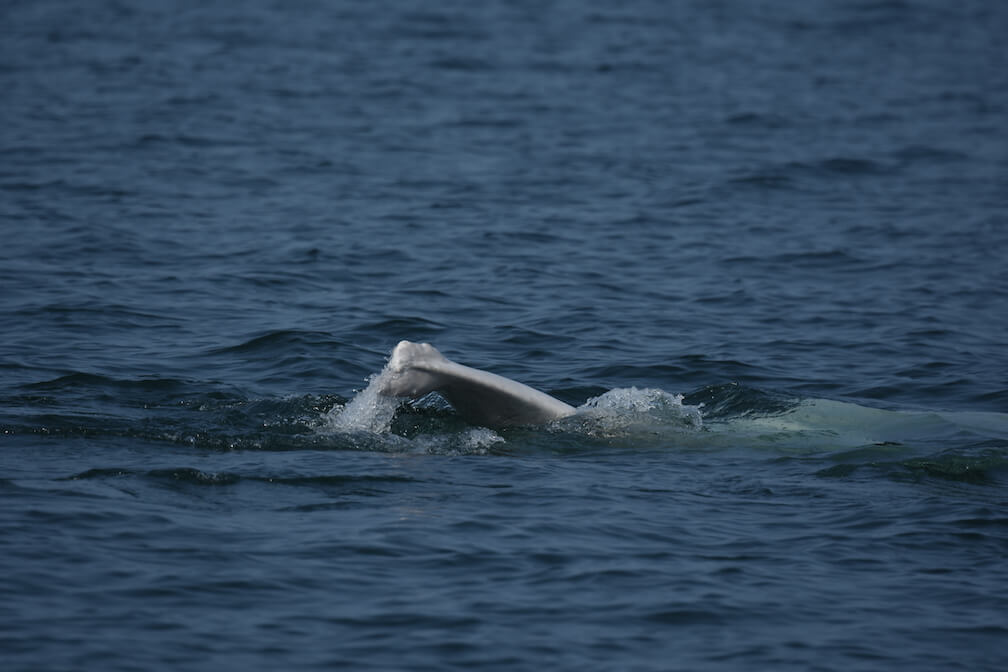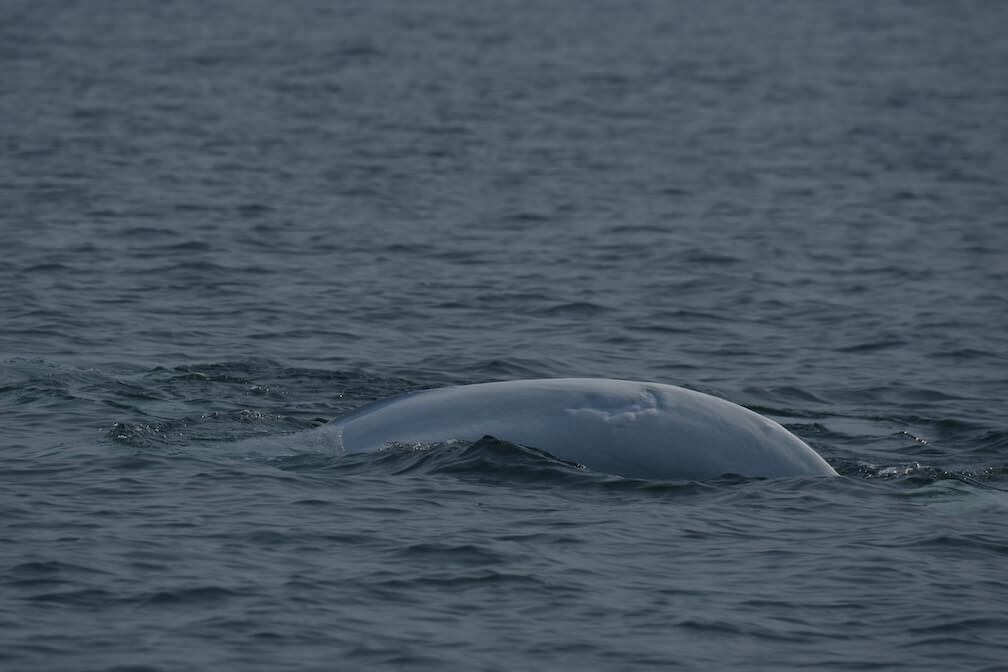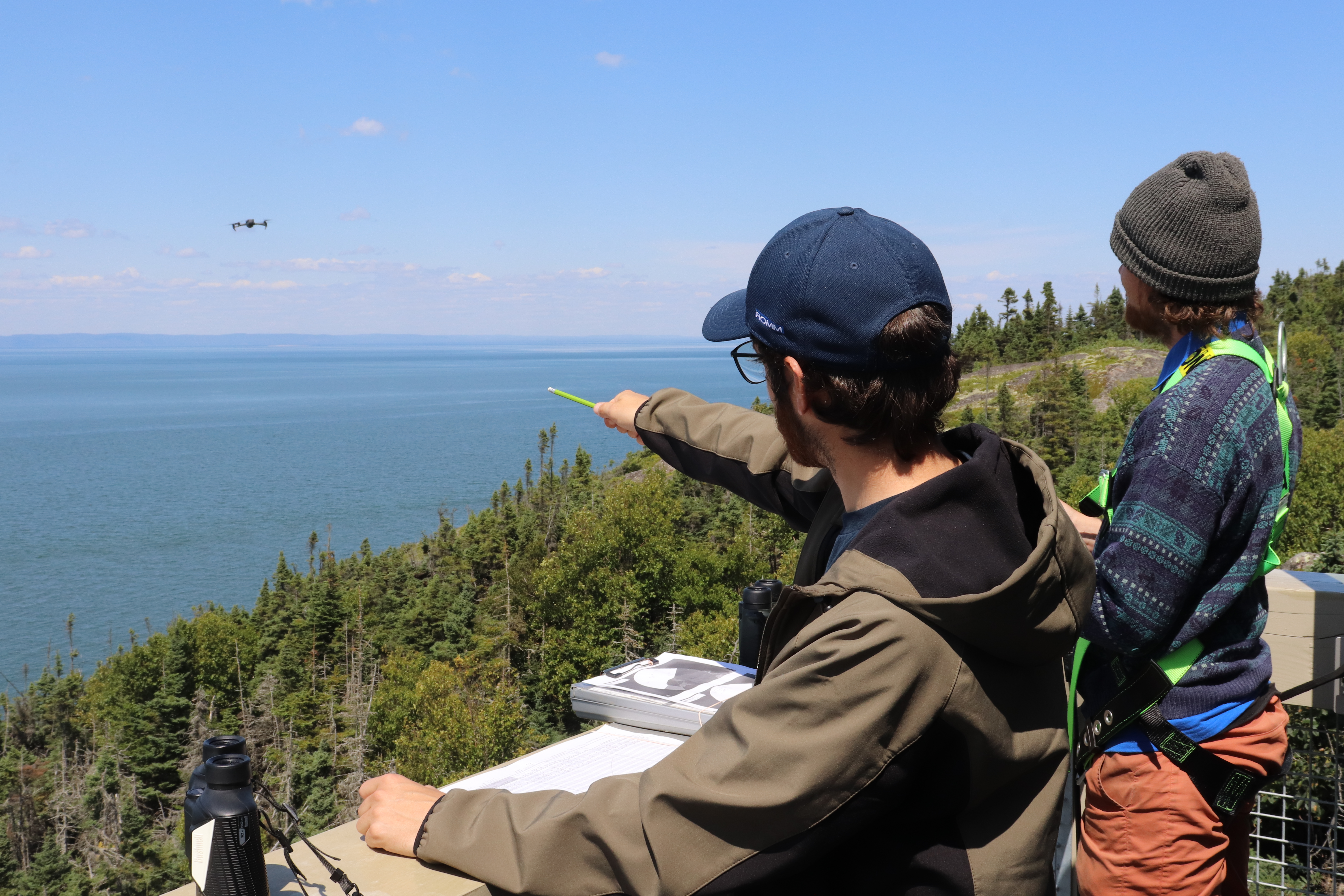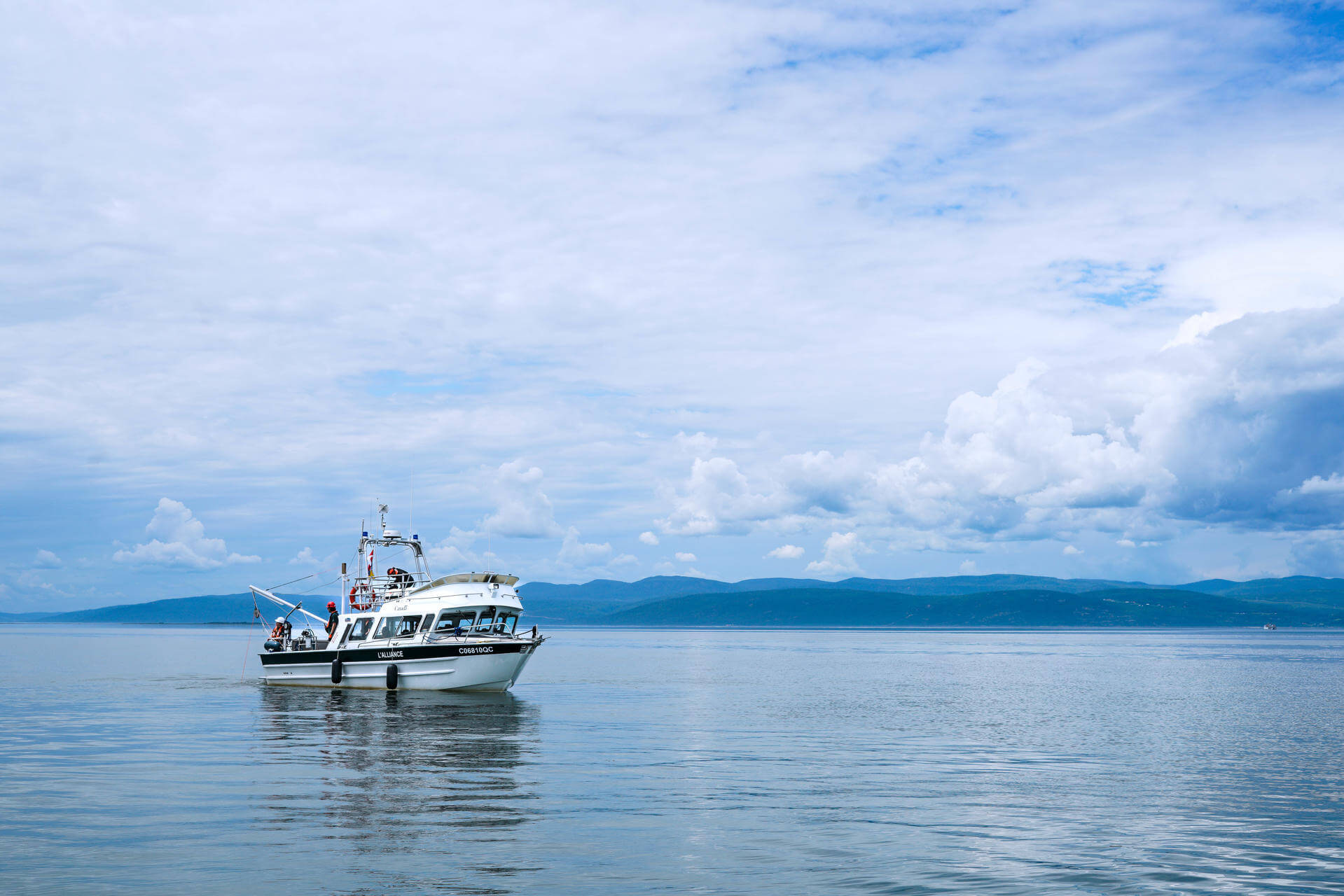Monday, August 13, 2018: At the crack of dawn, the BpJAMM crew heads out toward the mid-channel buoy in perfect weather conditions.
While whale-watching cruisers are thrilled about the diversity of large rorquals in the area, we are looking for belugas to continue the St. Lawrence Beluga photo-ID program conducted by the Group for Research and Education on Marine Mammals (GREMM).
After an hour of searching, we finally encounter a small group of about twenty belugas. Now the real work begins. Then, as the boat draws closer to the group, we realize that there are not just twenty white whales around us, but a herd of no fewer than 150!
We begin to photograph two groups of about twenty belugas each when we identify Douxi, known since 1990 and easily recognizable thanks to the conspicuous mark on the left side of his peduncle. Douxi had not been seen since 2009!
A few hundred metres upstream of our position, a group of seven young adults catches our attention. One of them is swimming differently than the others, lifting its peduncle with each breath.
And as we get closer, our wonder gives way to amazement… the individual no longer has a caudal fin!
This tail-less beluga has never been seen before. How did it get this wound? A collision with a ship propeller is the most likely hypothesis.
Nevertheless, this beluga appears to be in good health and its wound is not new, as it is well healed. Additionally, although it lifts its peduncle with each breath, it swims just like its peers and is able to keep up with the rest of the pack.
Unfortunately, the arrival of a blanket of fog in our workplace puts an end to the encounter faster than expected. This is not the first maimed whale encountered in the Saguenay–St. Lawrence Marine Park, and, unfortunately, surely not the last. Photo-identification may allow us to track the evolution of the life of this handicapped individual, and to better understand the effects of such an injury on its future health.







